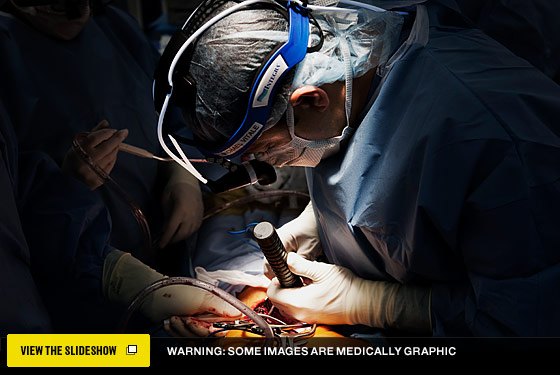
Doctor: Michael Vitale
Specialty: Pediatric Spine Deformity
Location: Morgan Stanley Children’s Hospital
Dr. Vitale: My patient, Matthew, was a 13-year-old with a difficult case of scoliosis and a significant cardiac problem called a tetralogy of Fallot. His heart has trouble adjusting to changes in blood volume. Guys like him sometimes don’t do well in surgery.
The first thing we did was correct his curve with two titanium rods anchored by screws. We cut down through the midline of his spine and very quickly found evidence of multiple spinal surgeries. Normally we have the benefit of bony anatomy to guide us, but because of scar tissue, we didn’t have the usual road maps. I used a portable CT scanner to see, within tenths of a millimeter, where my instruments were. Once I placed the screws, we used the rods to straighten his back.
Then we had to fuse ten bones between the lowest part of the thoracic spine and the pelvis, which reinforces the correction of his big curve. Normally, we add grafts onto a patient’s native bone, but because of the previous surgeries, Matthew didn’t have an adequate structure. So we had to use genetically engineered bone protein, which was placed inside a sponge in a lab. We laid the sponge on either side of Matthew’s spinal cord. Any cells touching the sponge will eventually turn into bone.
The procedure was on a Tuesday. On Friday, Matthew went home. Before this, he couldn’t do anything beyond simple activities. Once he’s healed, he could play football if he wanted.
As told to Eric Benson.

Dr. Vitale greets his 13-year-old patient, Matthew, before the operation. Photo: Q. Sakamaki/Redux